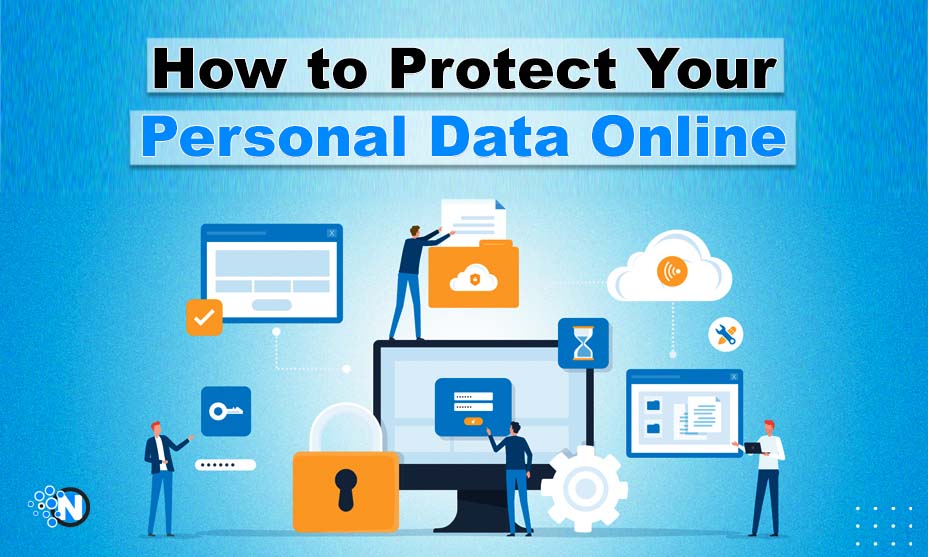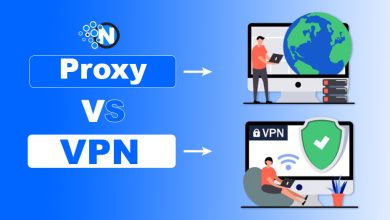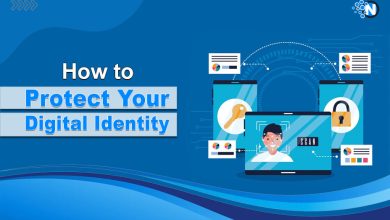A Guide on How to Protect Your Personal Data Online

As you can imagine, online data protection has never been more important. The more we use the internet for business, leisure and communication, the more snippets of personal data we leave behind; snippets that cybercriminals, advertisers and other illicit users can take advantage of.
Our digital footprint, which includes most things (from social media accounts to online purchasing information) can expose our private information about us and leave us dangerously open to identity theft, financial fraud and invasions of privacy. Knowing the dangers and acting proactively to protect our online presence are now becoming crucial steps in protecting our personal information.
In this article, we’ll go over the tried and tested tactics to keep you safe; such as the use of strong passwords, two-factor authentication, and how something as simple as an ad blocker can help significantly.
We’ll also cover how to control your online presence, discussing the possible (but very real) hazards of sharing particular things on social media. By the end of this article you’ll have the skills and resources required to confidently use the internet and take more control of your valuable, personal data.
Make use of secure and unusual passwords
Creating secure, individual passwords for every account is one of the most effective steps in safeguarding your personal information online. At least 12 to 16 characters long, a secure password should contain a combination of numbers, symbols and uppercase and lowercase letters. And remember, your passwords will be easier to break if you use predictable information like your name, birthdate, or address. Avoid simple phrases and common words too.
For every one of your internet accounts, you should use a unique password. This will prevent criminals from using a compromised password (accessed by data leaks) to access any of your other accounts. And don’t think ‘this won’t happen to me’. Data leaks are common place nowadays – even from the bigger names. Understandably, recalling dozens of intricate passwords can be difficult. In this case, a password manager is generally a wise decision.
For every one of your accounts, a password manager creates, saves and automatically fills strong, unique passwords. To open your password vault, you just need to memorize one master password – or biometrics (such as a fingerprint or facial recognition). To strengthen your internet security even more, most password managers also provide tools like breach monitoring and password strength auditing – which is pretty handy.
Turn on two-factor authentication
This is a must. When 2FA is active, users must supply two distinct authentication codes when accessing important settings. In this sense, 2FA provides an excellent degree of security. Without knowledge of your second authentication (even if a hacker gets your password) they won’t be able to access your account.
The most often used 2FA methods are:
- SMS codes: You receive a one-time passcode by text message to enter after your password.
- Authenticator apps: On your smartphone, create time-based codes that you enter while logging on.
- Security keys: Actual USB sticks you insert to confirm your identity
- Biometrics: Verifies it’s you with a fingerprint or face recognition (although not as common as the above options)
- Enabling 2FA on all of your critical accounts: email, banking, social media, and cloud storage—is the best option for you. 2FA can be enabled in your account security settings on many services these days.
Although 2FA requires an additional step in the login process, the substantial security advantages much exceed the small inconvenience; it’s on of the greatest defenses against unwanted access to your accounts and the loss of your private information.
Watch what you post on social media
Social media is notorious for scammers to get hold of your personal details – which could seriously jeopardize your online security. Your public posts and profile can provide hackers and con artists with all the important information they need; including your entire name, birthdate, address and other personal information. They’re heartless in this regard and will try anything to get it.
Using this information, they might then guess your passwords, which frequently include personal aspects, like a pet name or a specific memorable date (an anniversary, the day you met your partner etc). Whatever you post online, remember that your shared information can potentially be used by cybercriminals to access your accounts and likely respond accurately to your security questions.
The best practice is to go over your privacy settings on every social networking site to protect yourself. Restrict how much personal information is seen – like your birthdate, where you live and the names of your family. Watch what you post and think about how the information you provide could be used against you. Vigilance, always is key.
And ALWAYS be careful of strangers who ask to be friends on social media. This is a common occurance and criminals will take advantage of your friendly nature by doing this. Don’t accept the friend request of someone you don’t know in real life, because it’s highly likely that they’re trying to get your personal information for bad intentions.
Avoid dubious downloads and URLs
Scammers frequently rely on something known as ‘Phishing scams‘ to trick you into disclosing their login details. It’s called ‘phishing’ becasue they want you to take the bait. Emails and texts that seem to be from reliable sources, such as banks or social media sites are usually the ones to watch out for. They normally go along the lines of ‘your account is having issues’, or they’ll ask you to click on a particular link to update your details.
Clicking on these links will inevitable take you to shoddy websites intended to take your login details or infect your computer with malware (which is never good). the key here is to avoid unsolicited emails and communications at all costs, particularly ones that seem urgent.
A good tip is to hover over any links to view the full URL and look for any typos or strange domain names. Rather than clicking the supplied link, go straight to the website by entering the URL into your browser – especially if you’re not sure if something is genuine. Ad blockers also help here as they block anything coming in from suspicious site.
I know it’s easier said than done, especially when things are busy and hectic, but you can greatly lower your chance of falling for phishing schemes by being taking your time – be cautious and watchful.
Update hardware and software
You will have no-doubt seen that most updates include security changes of some kind, and there’s a good reason for this. Updating your browsers, apps and operating systems regularly is essential to protecting your online privacy.
Important security fixes intended to address known vulnerabilities and guard against the newest threats are regularly released by software developers in updates. Staying on top of this (on all of your devices) guarantees that they have the newest security features.
Turning on automatic updates is a practical approach to keeping current with these upgrades without having to do things manually. For an added degree of defense, think about using a trustworthy antivirus and anti-malware software – and ad blocker also works well here.
Your personal information may easily be compromised by malicious software (it happens to the best of us), and these tools can assist identify them and remove them swiftly.
Browse knowing you’re safe
If you stick to these recommendations, take your time, be vigilant, and ask for help if you need it your chances of falling victim to these evil scams will be less of a worry. Remember that cybersecurity is a constant process – where new threats emerge regularly – so you should keep up to date on this and strengthen your security measures as needed.




